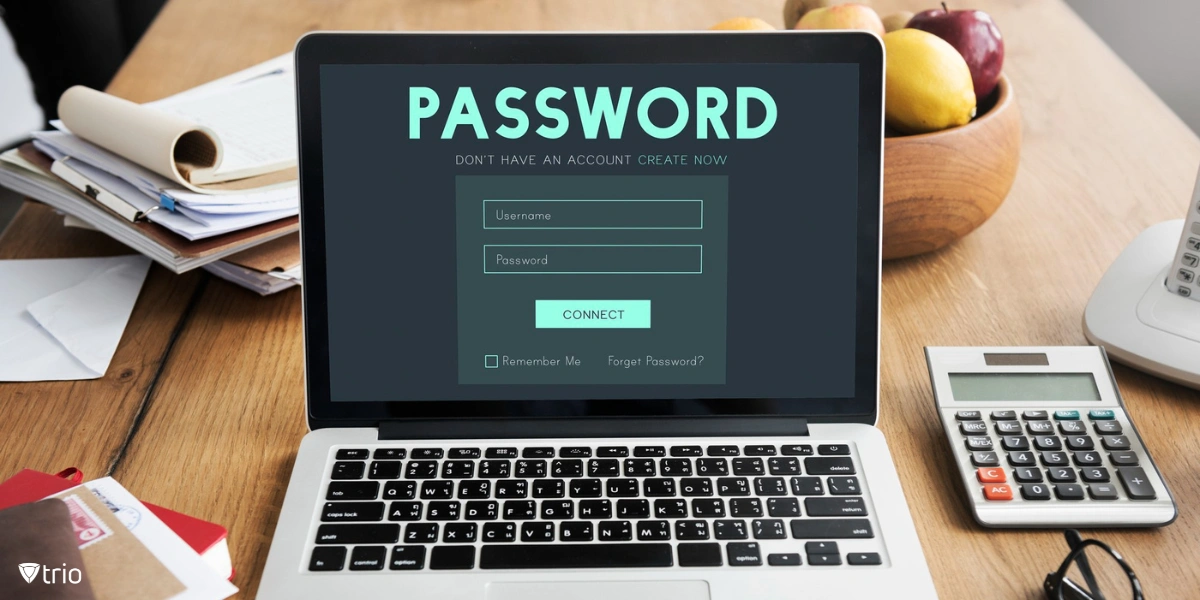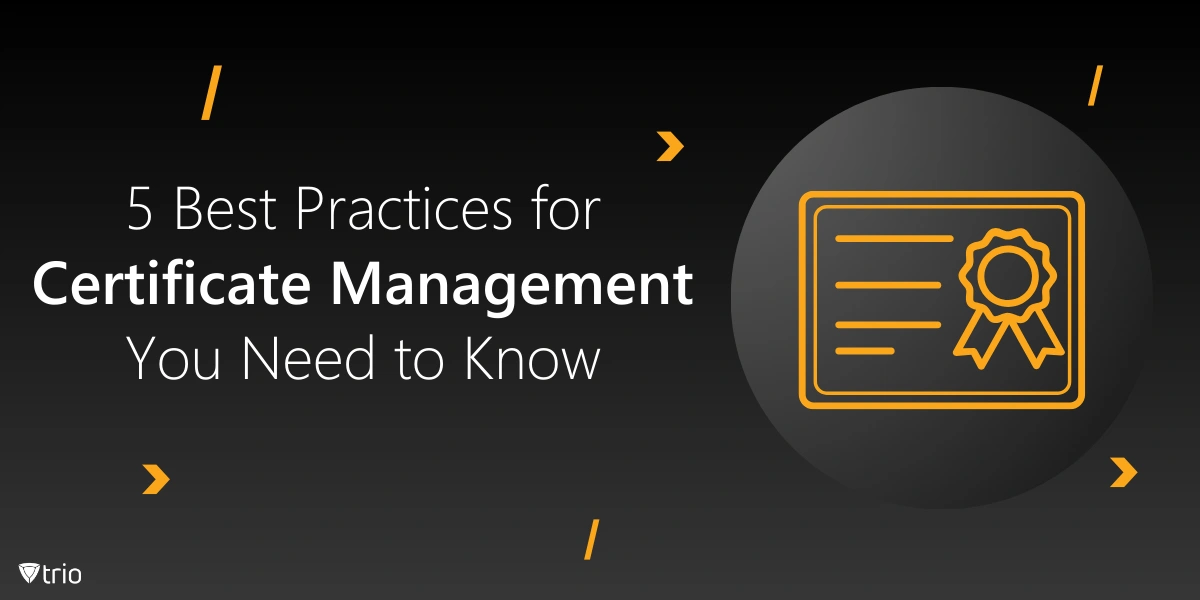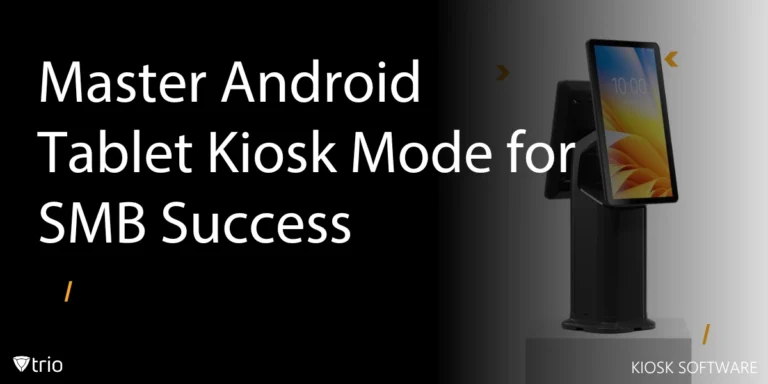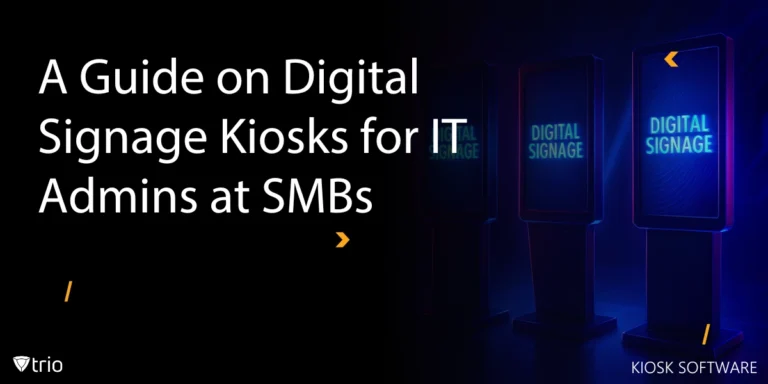Managing digital certificates might not be the first thing on your mind, but it's crucial for keeping your systems secure. Certificate management plays a key role in protecting businesses that rely on mobile device management (MDM) systems and cloud infrastructures.
So, what exactly is certificate management? It involves the lifecycle processes of creating, distributing, renewing, and revoking digital certificates. These certificates verify identities and encrypt data, ensuring that communications within your network remain safe and trustworthy. Adopting certificate management best practices is essential for maintaining the integrity and confidentiality of your digital interactions.
Neglecting certificate management can significantly increase your security risk, leading to company data breaches, compliance problems, and system outages. By following these best practices, you can keep your organization safe against these threats and ensure smooth, secure functioning.
Now that we understand the critical role of certificate management in safeguarding your digital assets, let’s see the best practices that lay the groundwork for a secure infrastructure.
-
Centralize Certificate Storage
Think of centralizing your certificates as having a well-organized toolbox. When all your server certificates and other digital credentials are stored in one place, you gain complete visibility and control. Without this central hub, managing certificate requests becomes chaotic, increasing the chances of overlooking critical updates or renewals.
Using a dedicated platform or software for certificate management simplifies the process. It allows you to monitor certificates issued by your certificate authority (CA) efficiently. Integrating device lifecycle management into this centralized system ensures that every device in your network is accounted for and secure. This setup not only makes audits a breeze but also automates renewals, reducing the risk of expired or rogue certificates that could expose your systems to threats. You minimize compliance headaches and operational hiccups by keeping everything unified, ensuring your security infrastructure remains robust and reliable.
-
Automate Certificate Lifecycle Management
Now that your certificates are all centralized, let’s take it a step further by automating their lifecycle. Automating the certificate lifecycle management ensures that every certificate, from issuance to renewal and revocation, is handled smoothly without manual intervention.
Implementing certificate renewal practices through automation helps you keep track of each certificate’s validity period, ensuring timely renewals and preventing unexpected expirations that could disrupt your services. Regular network scans become more efficient, quickly identifying any issues before they escalate into security breaches. Additionally, automating device provisioning means new devices are seamlessly integrated into your certificate system, maintaining consistent security across your network.
By leveraging specialized tools or software solutions, you reduce the risk of human error, minimize system downtime, and strengthen your overall security posture. Embracing automation not only streamlines your certificate management but also fortifies your defenses against potential threats.
-
Use Strong Encryption Algorithms
With automation handling the life cycles of your certificates, it’s time to bolster your security by focusing on the encryption standards you use. Strong encryption algorithms are the backbone of secure communications, ensuring that your data remains protected against evolving threats.
Choosing the right key pair and key length is crucial for maintaining robust security. Outdated algorithms like SHA-1 are no longer secure and can leave your systems vulnerable to attacks. Opt for modern standards that support longer key lengths to enhance your SSL/TLS protocols.
Staying current with encryption practices means regularly updating your SSL/TLS configurations and avoiding deprecated algorithms. Implementing strong device encryption further safeguards your data, making it difficult for unauthorized users to access sensitive information even if they breach other defenses.
Regularly reviewing and upgrading your encryption methods helps prevent security loopholes that could lead to data breaches or system compromises. By prioritizing strong encryption, you ensure that your certificate management strategy remains resilient against sophisticated cyber threats, protecting both your business and your clients.

-
Monitor and Audit Certificates Regularly
After strengthening your encryption, the next step is to ensure your certificates remain secure and compliant over time. Regular monitoring and auditing play a pivotal role in maintaining the health of your certificate infrastructure.
Continuous certificate validation is essential to ensure that all certificates are active and trustworthy. Implementing extended validation provides an extra layer of security by thoroughly verifying the identities associated with your public key infrastructure. Utilizing robust monitoring tools can help flag unusual activities or expired certificates, preventing potential system downtime or security breaches.
To keep everything on track, set up automated alerts that notify you before a certificate's validity period expires. Conducting regular audits, ideally on a quarterly basis, ensures that your certificates comply with various types of compliance requirements specific to your industry. Additionally, integrating these practices into your device provisioning process guarantees that new devices adhere to your security standards from the start. By staying proactive with monitoring and audits, you can swiftly address any issues, maintaining a secure and reliable certificate management system.
-
Implement Role-Based Access Control (RBAC) for Certificates
Building on regular monitoring, it's crucial to control who can handle your certificates. Implementing Role-Based Access Control (RBAC) ensures that only the right people have access, reducing the chance of internal mishaps or breaches.
Securing your certificates starts with protecting your secure private keys through access provisioning. With RBAC, you can assign specific roles and permissions, ensuring that only authorized team members can issue certificates or handle key generation. This minimizes the risk of unauthorized access and potential misuse.
Start by mapping out your team’s responsibilities and defining roles accordingly. For instance, developers might have access to request certificates. Use specialized software to enforce these policies, making it easy to manage and audit who has access to what.
By restricting access based on roles, you not only enhance security but also streamline operations. This approach prevents accidental misconfigurations and ensures that certificate management tasks are performed by qualified personnel. Ultimately, RBAC fortifies your certificate infrastructure, safeguarding your organization from both external threats and internal vulnerabilities.

Explore Trio
Managing certificates can be challenging, but our MDM product, Trio, makes it easier by streamlining your certificate management processes. From centralizing storage to ensuring compliance, Trio supports your security needs. Try the free demo today and discover how Trio can enhance your certificate management effortlessly!
Wrap-Up: Fortify Your Security
Adopting these certificate management best practices can greatly enhance your organization’s security framework. By centralizing storage, automating lifecycle management, using strong encryption, regularly monitoring, and implementing RBAC, you reduce the risks of breaches and compliance issues.
Take a moment to review your current certificate processes and consider integrating a centralized, automated, and secure system. Embracing these practices ensures your digital assets stay protected and your operations run smoothly.
Get Ahead of the Curve
Every organization today needs a solution to automate time-consuming tasks and strengthen security.
Without the right tools, manual processes drain resources and leave gaps in protection. Trio MDM is designed to solve this problem, automating key tasks, boosting security, and ensuring compliance with ease.
Don't let inefficiencies hold you back. Learn how Trio MDM can revolutionize your IT operations or request a free trial today!





